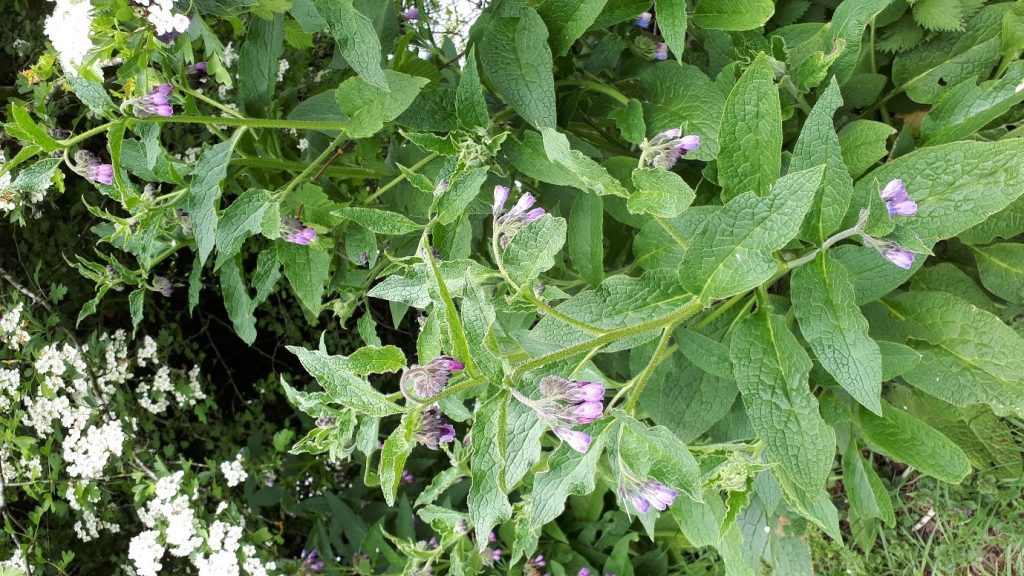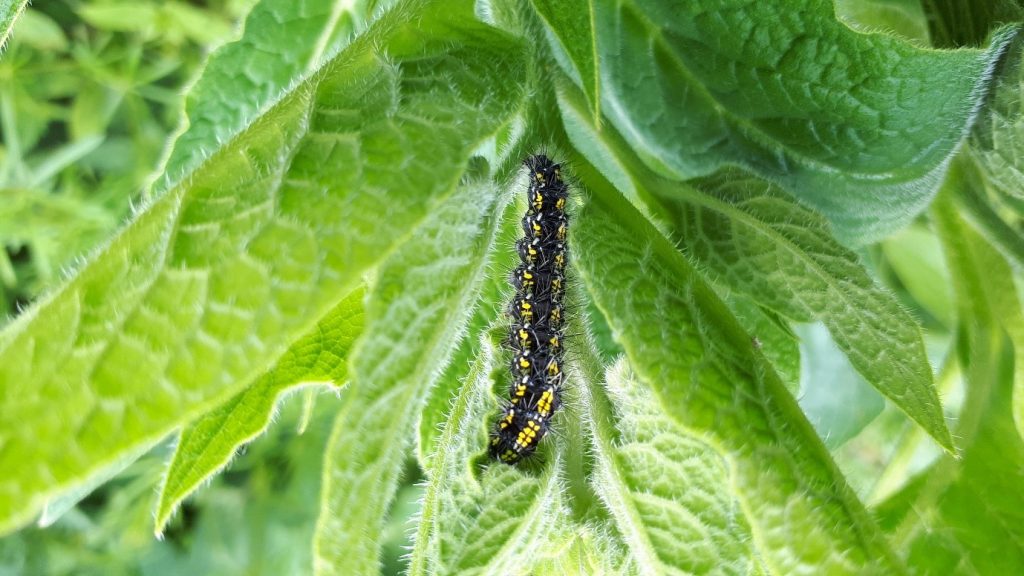Country parks Blog: Life on the riverbank
If you are lucky enough to live near a river, this is a lovely time of year to get out for a waterside walk. One of the main plants that is coming into flower on river banks through May is comfrey (Symphytum officinale). Comfrey has lush hairy leaves. The deep roots absorb nutrients such as nitrogen, potassium and phosphorous from the soil. Comfrey can grow up to 1m high and 1m wide.

Comfrey
Because of the ability of comfrey to absorb minerals, the leaves make an excellent fertiliser. They simply need picking and mixing with water to make a rich liquid feed. Comfrey also has value as a herbal remedy. It is sometimes known as knitbone. Broken bones and torn muscles are said to be healed by laying a poultice of comfrey leaves on the skin.
Comfrey is home to many different types of invertebrate. Bees love the chalky blue flowers. The black and yellow caterpillars of the scarlet tiger moth feed on the leaves through May and then emerge as beautiful adult moths as we enter June.

Caterpillars
Written by Edward Andrews from Shropshire Council’s outdoor partnerships team. The team manages and preserves country parks and countryside sites right across Shropshire for people to enjoy and wildlife to flourish.
Previous blogs
First sign of Spring
Brimstone Butterfly
Bluebells – The Woodland Blues
Dawn Chorus
Trees in Bloom
Keep up to date
We want to keep you as up to date and informed as possible. To help us do this, please sign-up to receive our email updates.
These updates will include key Shropshire Council news, important updates from our partners and service specific information. Sign-up now.
Please do encourage your family and friends to sign up to the updates too. This will help us keep everyone up to date.

